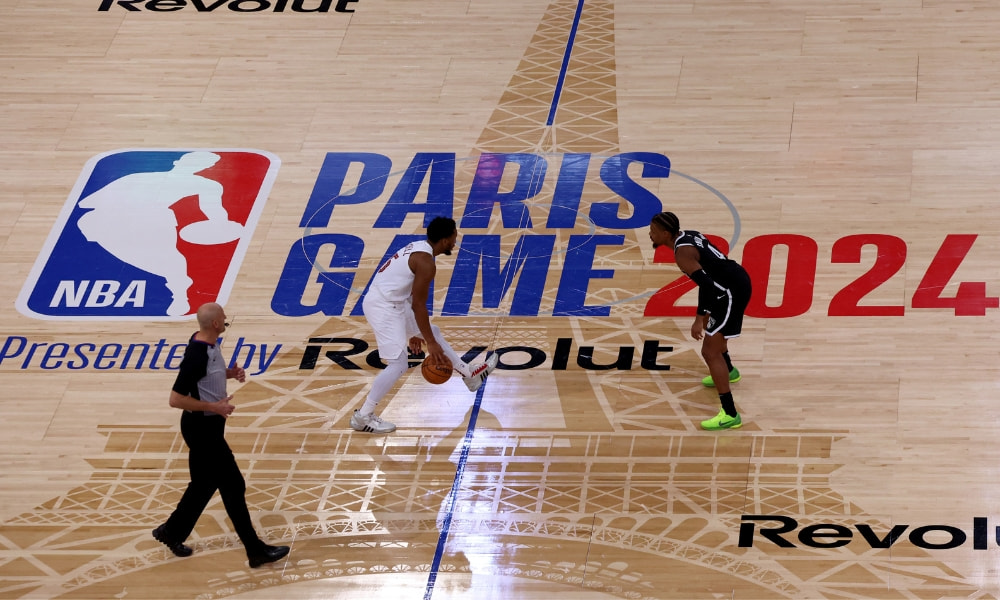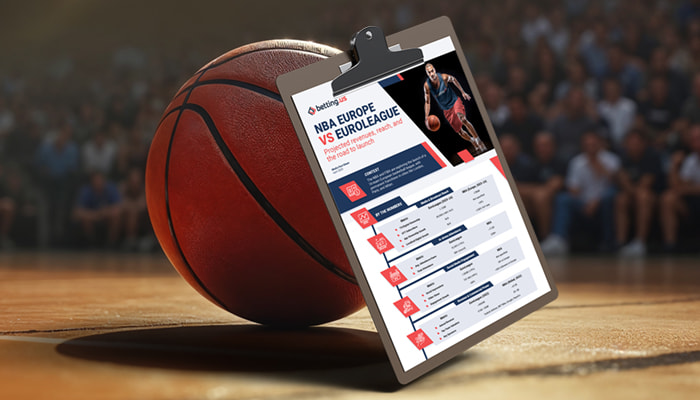The NBA’s European League Could Be Super League 2.0 — and This Time, It Might Actually Work

The NBA, in partnership with FIBA, is exploring the launch of a new professional basketball league based in Europe — a move that could disrupt the continent’s existing basketball hierarchy and pose the biggest challenge yet to the EuroLeague.
Here are five key takeaways that explain what’s coming, why it matters, and how it could reshape basketball in Europe forever.
You can download the complete NBA vs. EuroLeague Fact Sheet, which includes revenue projections, digital stats, and market comparisons.
1. This Is the Super League Story — But It Might Actually Happen
The NBA and FIBA are laying the groundwork for a new 16-team European basketball league — a concept eerily similar to football’s doomed Super League. The difference? This time the structure, brand power, and global audience already exist.
The NBA doesn’t need to convince fans it’s elite — it already is.
And unlike the Super League, which collapsed under fan and federation backlash, this project has FIBA’s cooperation and significant interest from major European clubs like Real Madrid, PSG (via Paris Basketball), and ASVEL.
2. The EuroLeague Can’t Compete with the NBA’s Global Firepower
While the EuroLeague is thriving regionally, it operates on an entirely different scale. In 2023–24:
- EuroLeague revenue: ~$757M
- NBA global revenue: ~$12B
- Average EuroLeague team value: $114-171M
- NBA teams: $3–5B valuations
Even in Europe alone, the NBA recorded over 1 billion digital video views, more than the EuroLeague’s 747M — and that’s without a local league presence yet.
The numbers suggest the NBA already has more European fans than the EuroLeague, at least online.
3. The Commercial Potential in Europe Is Massive — and Untapped
Based on current data and projections, here’s how big the European basketball market could become if the NBA launches a continental league:
| Revenue Stream | Potential Annual Value |
|---|---|
| Local broadcast/media rights | $285M–€455M (projected based on EPL/Ligue 1 comps) |
| Sponsorship (global + local) | $228M+ (from new partners and European brands) |
| Ticketing (16 teams x 30 games) | ~$285M ($17–22 avg. per ticket x 15K avg. attendance) |
| Merchandising & licensing | $114M–€171M (based on NBA global merch stats) |
| Total Est. Annual Value | $912M–$1.1B+ |
That’s a market that could eventually rival or eclipse the entire EuroLeague — within just a few years.
4. A Cultural Shift Is Already Happening
While traditional basketball fans in Greece, Serbia, and Turkey may be loyal to local clubs, younger fans across Western Europe are already following NBA players and brands, not necessarily EuroLeague teams.
- NBA social media in Europe: +100% YoY growth
- NBA-App usage: +39%
- Social followers in Europe: +50% YoY
With the rise of player-first fandom, European cities like London and Paris, where basketball fandom is growing but local teams lack legacy power, are prime for NBA-style franchises.
5. If It Launches, It Could Reshape the Global Basketball Ecosystem
This isn’t just a European story. If NBA Europe succeeds:
- It could pressure the EuroLeague to merge, adapt, or fade.
- It could become a model for future leagues in Asia, Africa, or Latin America.
- It could shift betting markets, player development pipelines, and global media deals.
What This Could Mean for Basketball Worldwide
If NBA Europe succeeds, it won’t just change where basketball is played — it could redefine how the game is marketed, monetized, and even bet on. As I see it, this isn’t just a new league — it’s a blueprint for the future of global basketball economics.
